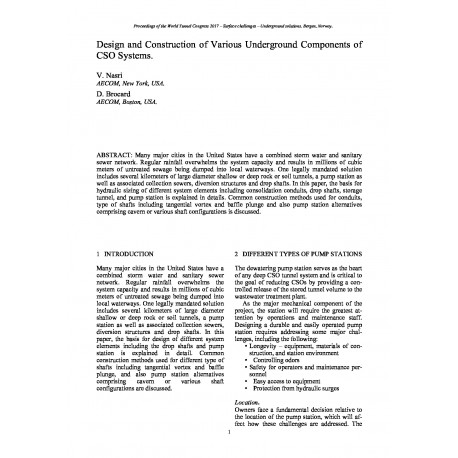Cart
0
0
No document
0,00 €
Total
Document successfully added to your shopping cart
Quantity
Total
There are 0 items in your cart.
There is 1 item in your cart.
Total documents
Total shipping
To be determined
Total
Search & filter
Search for a publication
Search & filter

Design and Construction of Various Underground Components of CSO Systems
14851_design_and_construction_of
Many major cities in the United States have a combined storm water and sanitary sewer network. Regular rainfall overwhelms the system capacity and results in millions of cubic meters of untreated sewage being dumped into local waterways. One legally mandated solution includes several kilometers of large diameter shallow or deep rock or soil tunnels, a pump station as well as associated collection sewers, diversion structures and drop shafts. In this paper, the basis for hydraulic sizing of different system elements including consolidation conduits, drop shafts, storage tunnel, and pump station is explained in details. Common construction methods used for conduits, type of shafts including tangential vortex and baffle plunge and also pump station alternatives comprising cavern or various shaft configurations is discussed.


